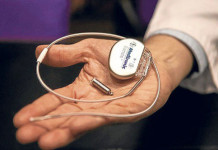In addition, it can reduce the treatment time.
DIAGNOSIS.
Thanks to mobile units, Brain Rescue accelerates.
A stroke is a vital medical emergency. For this reason, it is very good news the existence of an ambulance that speeds the diagnosis-and subsequent treatment of a stroke.
It is the Mobile Brain Rescue Unit and it is equipped with the latest technology. Thanks to this technical advance, major studies can be carried out during transport to a medical facility.
Another big news is that while in the world such vehicles are just being implemented, Argentina is a pioneer and already has the first Brain Rescue Mobile Unit in Latin America.
Vital minutes
With this type of ambulance, vital minutes can be saved, and used to decide the therapy to follow, thus reducing mortality and disability from a stroke.
The private hospital La Sagrada Familia was the first to implement it. DOSUBA, the social insurance of the University of Buenos Aires was the first to sign for this service.
A stroke is a severe medical emergency. When blood flow to the brain is interrupted, every minute raises the risk of disability and death.
That’s why the arrival of Brain Rescue mobile units represent an opportunity for patients suffering from these accidents.
Prof. Dr. Peter Lylyk, neurosurgeon and director of ENERI and La Sagrada Familia, explained that «the vehicle has a tomograph, Doppler ultrasound, laboratory and a full medical team (neurologist, nurse, radiographer) in permanent contact with the medical staff of the clinic.
The ambulance reaches where the patient is; a brain scan and other studies done in less than three minutes, on board the mobile unit; results and images are transmitted to the base, where the team of neurology, neurosurgery and interventional neuro-radiology assess the situation and decides the course of action.
About CVA
The stroke can be of two types: the most common is ischemic (blockage of the vessel due to a blood clot), and the other is hemorragic (rupture of a blood vessel in the brain).
If it is an ischemic stroke, international guidelines recommend administering thrombolytic drugs as quickly as possible, maximum up to four hours after the event; After that time, other techniques should be applied.
For this, the diagnosis must be confirmed and then the kind of stroke should be determined.
«If the diagnosis of ischemic stroke is confirmed, the treatment starts right in the ambulance, by administering a thrombolytic drug, namely that helps dissolve clots or» thrombi «and restore blood flow to the brain,» explained the specialist .
We must keep in mind that, according to the World Health Organization (WHO) in 2012, 6.7 million people died worldwide from stroke. It is also an important cause of long term disability.
In Argentina, stroke (CVA) is a serious problem: a study in Junin indicated a prevalence of 868 cases per 100,000 inhabitants.
Sources:









